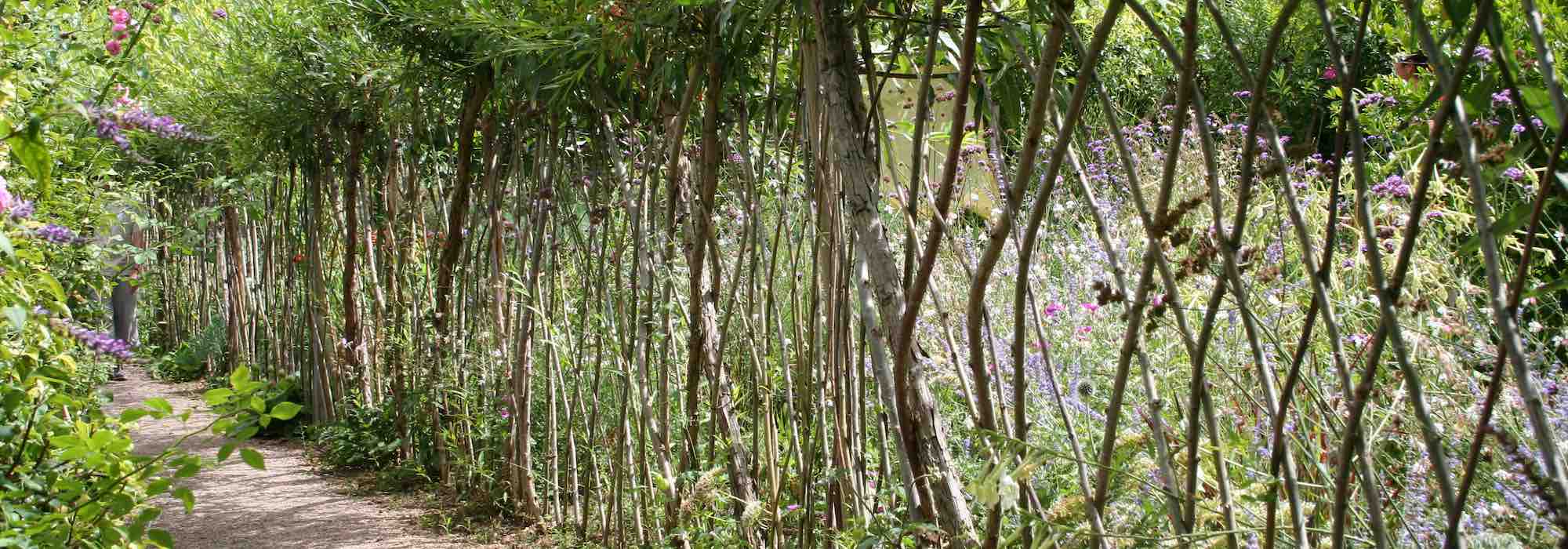
How to plant and maintain a living willow hedge?
For a beautiful result
Contents
Living willow hedges appeal for many reasons: they are both attractive, long-lasting and inexpensive to grow in the garden. Better still, they can easily adapt to different types of soils, and they cope particularly well with the harshest periods of winter – you can even grow them in the mountains! A living willow hedge can generally live for around thirty years without any problem, making it also a sustainable alternative. But for it to give you complete satisfaction, you must still take the time to plant it correctly, water it sufficiently, prune it and, above all, master the weaving work inherent to achieving a beautiful result. Discover when and how to create a beautiful living willow hedge… it will hold no secrets for you!
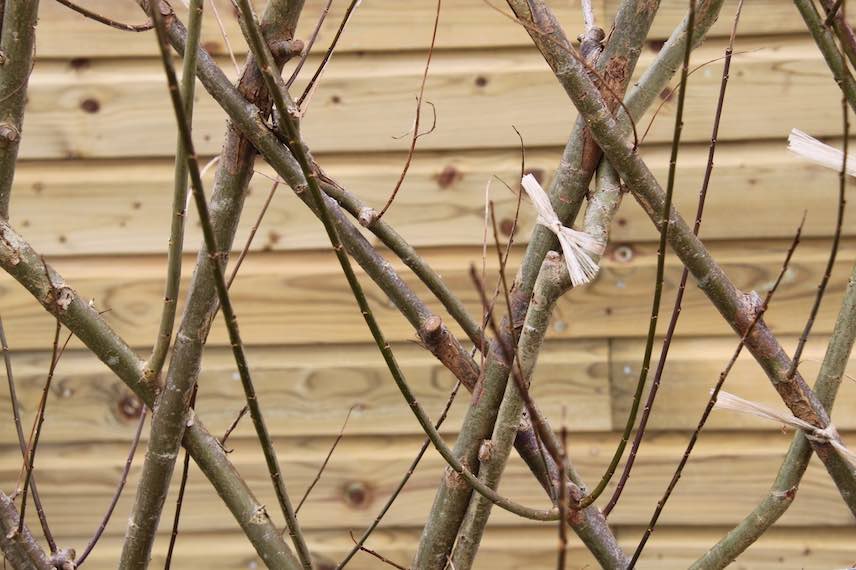
Which willows to use for a living hedge?
Almond willow, or Salix triandra, is particularly widespread. Beyond the black-to-brown colour of its withies, it has the specific characteristic of hardly thickening, which allows it to retain the meristematic cell form given by weaving (whereas other varieties can lose fineness over time).
Salix viminalis or Salix Purpurea are also perfectly suited to this use.
When to plant a willow hedge?
The best time to plant willow whips, and therefore to establish your hedge, is between December and late March, before sap rises.
Discover other Willow - Salix
View all →Available in 5 sizes
Available in 3 sizes
Available in 1 sizes
Available in 3 sizes
Available in 1 sizes
Available in 3 sizes
Available in 1 sizes
Available in 1 sizes
Available in 1 sizes
Available in 1 sizes
How to plant a living willow hedge?
Choosing willow rods
Choose one-year-old rods 1 to 1.5 cm in diameter and 2 to 3.50 m long. Beware, the longer a rod, the greater its diameter and the harder it will be to work.
Preparing the soil
Before planting your future living willow fence, loosen soil to a depth of 30 cm. Adding organic compost is not obligatory, but we recommend it to lighten very heavy clay soils a little and encourage rooting.
Then, push pairs of rods into soil in a line, spacing them 10 to 20 cm apart (depending on the weave you wish to create). For a diamond-pattern hedge, ensure each rod has a slight 45° inclination. When one series of rods is inclined to the right, incline the next to the left, and so on. Depending on intended use, using support posts can be useful.
Weaving the rods
To weave the rods and prepare your living willow screen, start at the bottom and plait a first row, alternating: one rod to the right, the other to the left. Then you can cross them when about 10 cm above soil if you want to form diamonds. In that case, be sure to tie the rods securely with a raffia tie.

When you have woven to full height, you can choose the finish you prefer for the top of your living willow hedge. Some let the shoots grow naturally for a living effect, while others bend the rods to form more artistic semi-circles.
To anchor your willow hedge against wind, plant wooden stakes every three metres, then stretch a wire at mid-height and another at the top.
How to care for a woven willow hedge?
Watering
During first year, you must water your willow hedge generously, twice a week, at about two watering cans per metre. Because large amounts of water are required at the start, it may be useful to equip yourself with an automatic watering system such as drip irrigation or a porous hose, which is more economical.

Also take time to observe your living willow hedge: if it starts to wilt, it means it does not have enough water and you should add some. Be particularly vigilant during summer, when weather is especially dry.
After that, it will be possible to space out waterings from second and especially third year (except for thin fences, which require more moisture).
Summer care and tips to reduce watering: importance of mulching
Each spring, you must renew the mulch of your living willow hedge, and remember to remove any bindweed that may have crept in. Each time, start by cleaning and weeding, then water and finally lay an organic mulch, ensuring a thickness of about 10 cm.
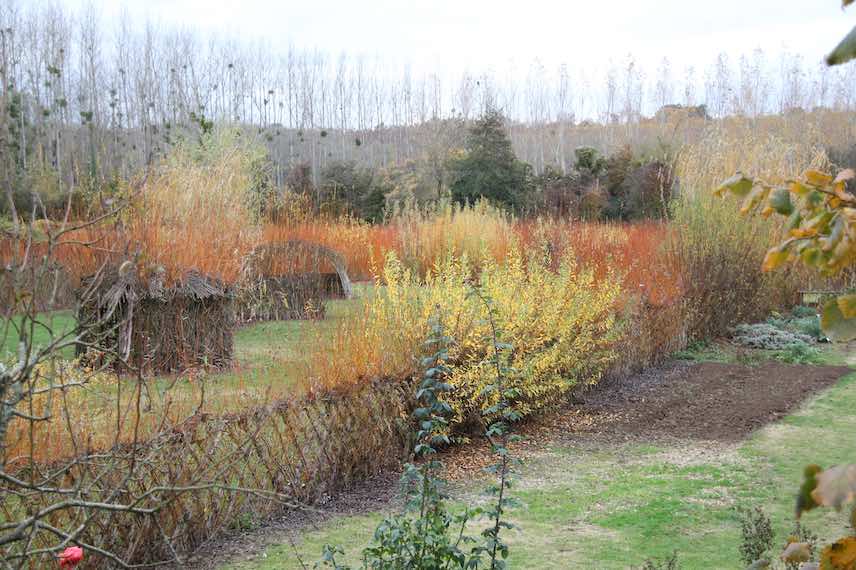
Using grass clippings is sufficient for good mulching – however, if you choose this option, you will need to renew it frequently because decomposition is rapid. Alternatively, hemp chips or shredded willow branches remaining after pruning can also be used.
Pruning a willow hedge
Bear in mind a wicker hedge is actually a willow hedge. It should therefore be pruned regularly so that shoots do not thicken too much, and remember this operation also helps preserve original braided shape and overall harmony of the living wicker fence.
To begin, a winter pruning is necessary: it can be scheduled between December and March, although it is recommended to delay it as long as possible when winter is particularly harsh. Take care to carry it out before sap rise, to remove with pruning shear shoots that are too tall or those on the sides.
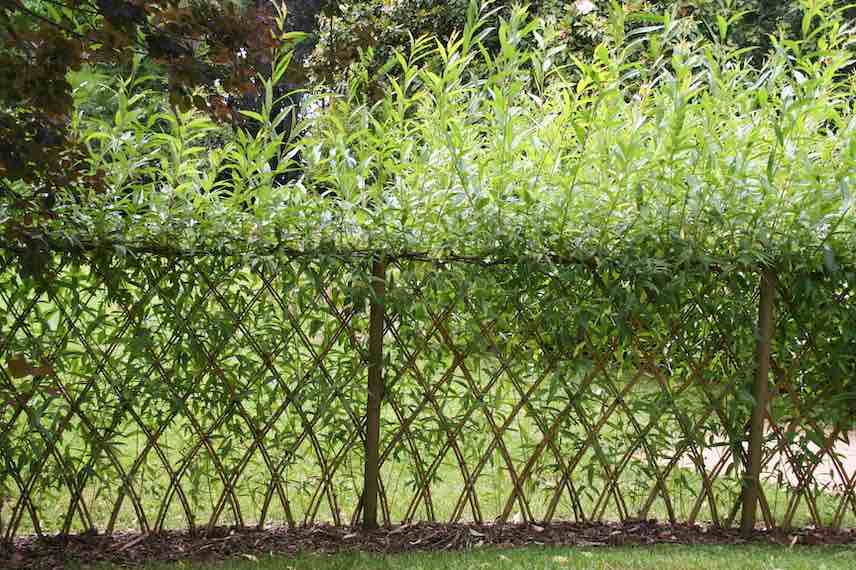
At late spring, between May and June, a maintenance pruning keeps appearance of the braid. For this, cut young shoots back by half – although a lighter pruning is possible.
Benefits of a living willow hedge to convince you!
An aesthetic, natural look with strong screening power
If you don’t really like the artificial, unnatural look of commercial fences, you should consider a living willow hedge. It is a visually pleasing, carefully crafted alternative with a particularly charming rustic feel.
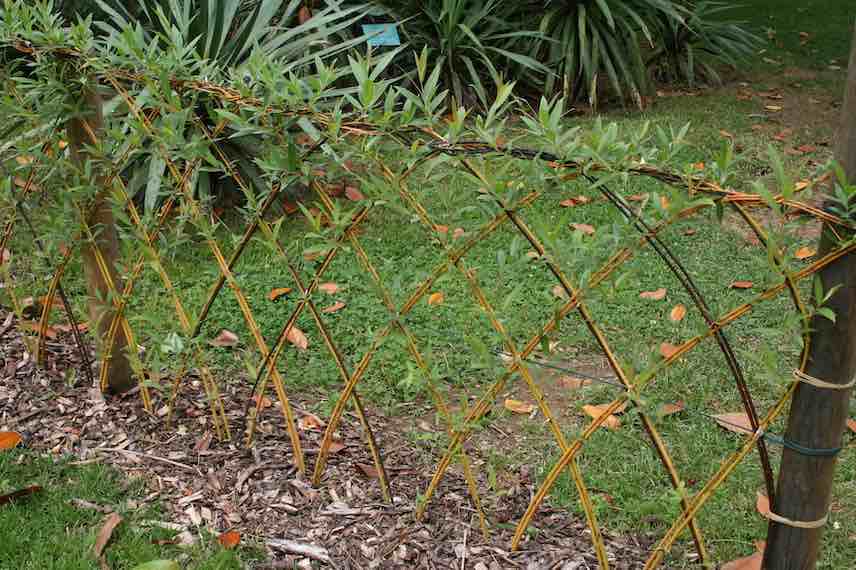
Why buy plastic privacy screens or build walls when you can use nature’s wonders to preserve privacy in the garden? To top it all off, weaving allows you to personalise the appearance of your living willow hedge according to your own tastes and needs… If you want something done properly, do it yourself! Finally, the shoots can easily be woven in large planters as well, on a patio or balcony.
A plant easy to multiply with propagation by cuttings
Don’t feel able to plant your own living willow hedge because you’re new to gardening? Although weaving may seem relatively complex, it is straightforward to succeed with a few well-illustrated tutorials to help you… And afterwards, your natural fence will require little maintenance.
Both prunings are easy to carry out and generally don’t take too long; watering can be automated with suitable equipment, and you won’t need to protect your hedge from various diseases or frost, as it remains naturally quite hardy.
A hardiness compatible with all French climates
Not all hedges can be planted anywhere, because some species do not tolerate cold, heat or wind. Good news: wherever you live in France, you can have a living willow privacy screen!
This plant can withstand wind if you install stakes and add wire to hold it; it copes perfectly when winter is harsh and morning frosts are common.
Every living willow hedge is truly unique, and that is also part of its charm: you take as much pleasure in weaving it as in watching it afterwards, while feeling proud to have created your own natural fence! Some even use living willow to build huts — another idea to delight children.
- Subscribe!
- Contents
































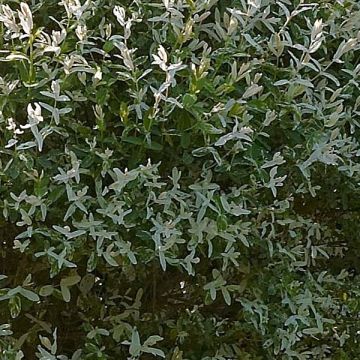
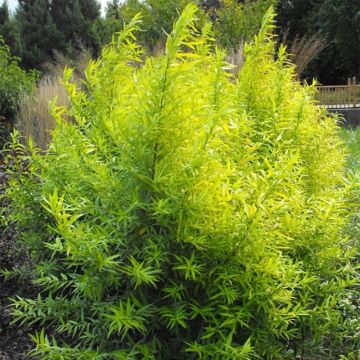

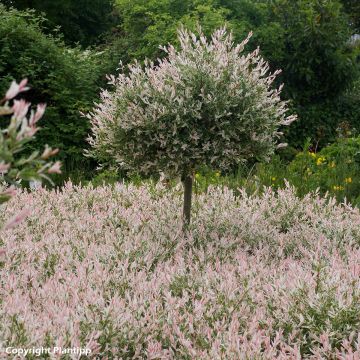

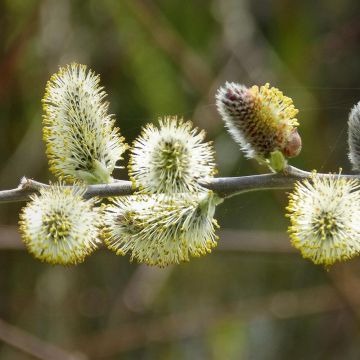
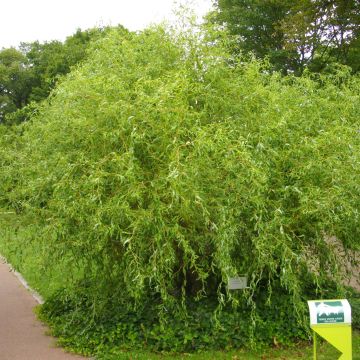
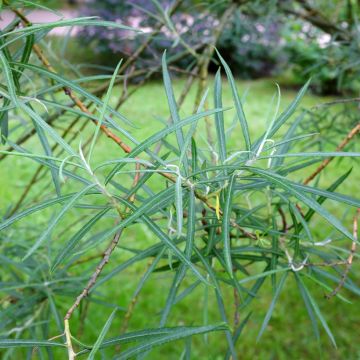

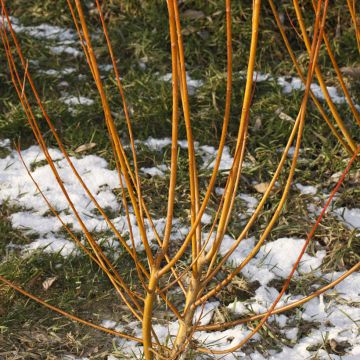
Comments